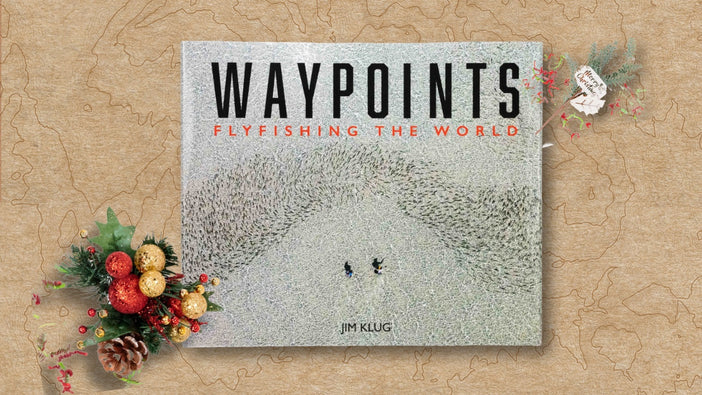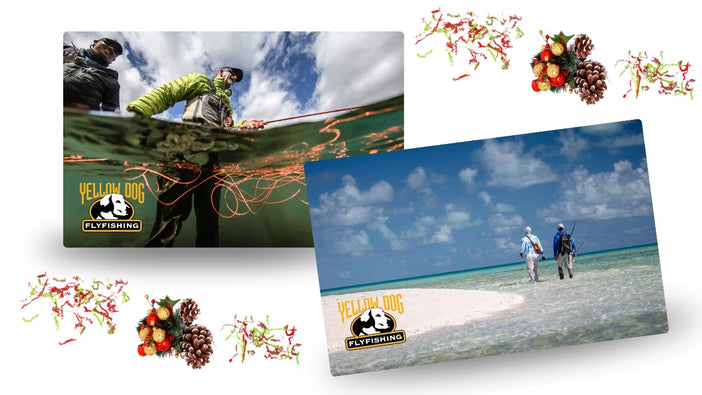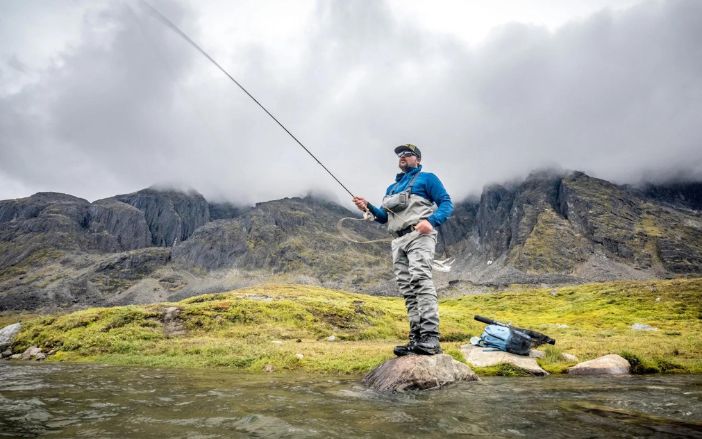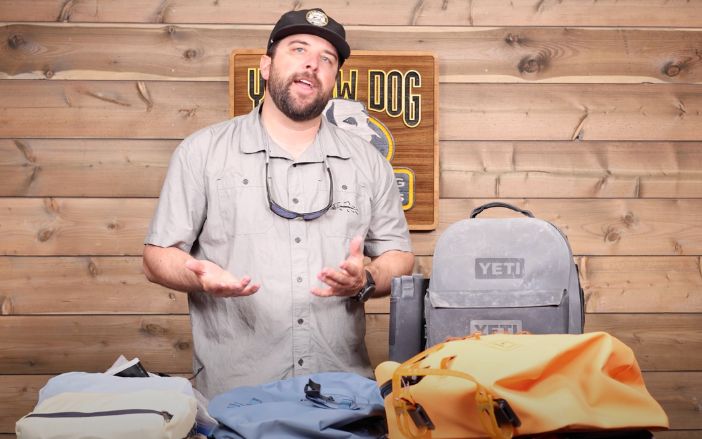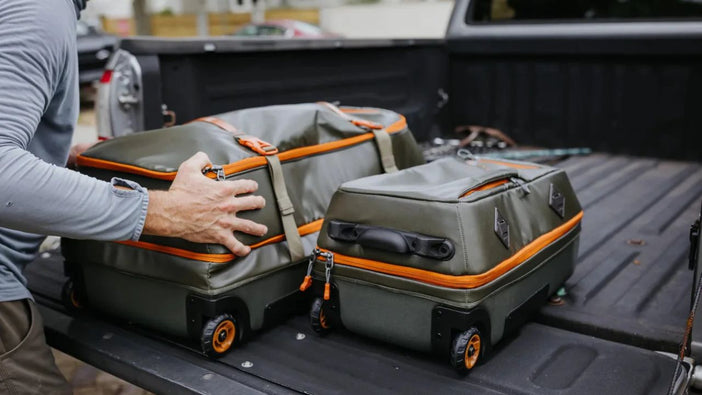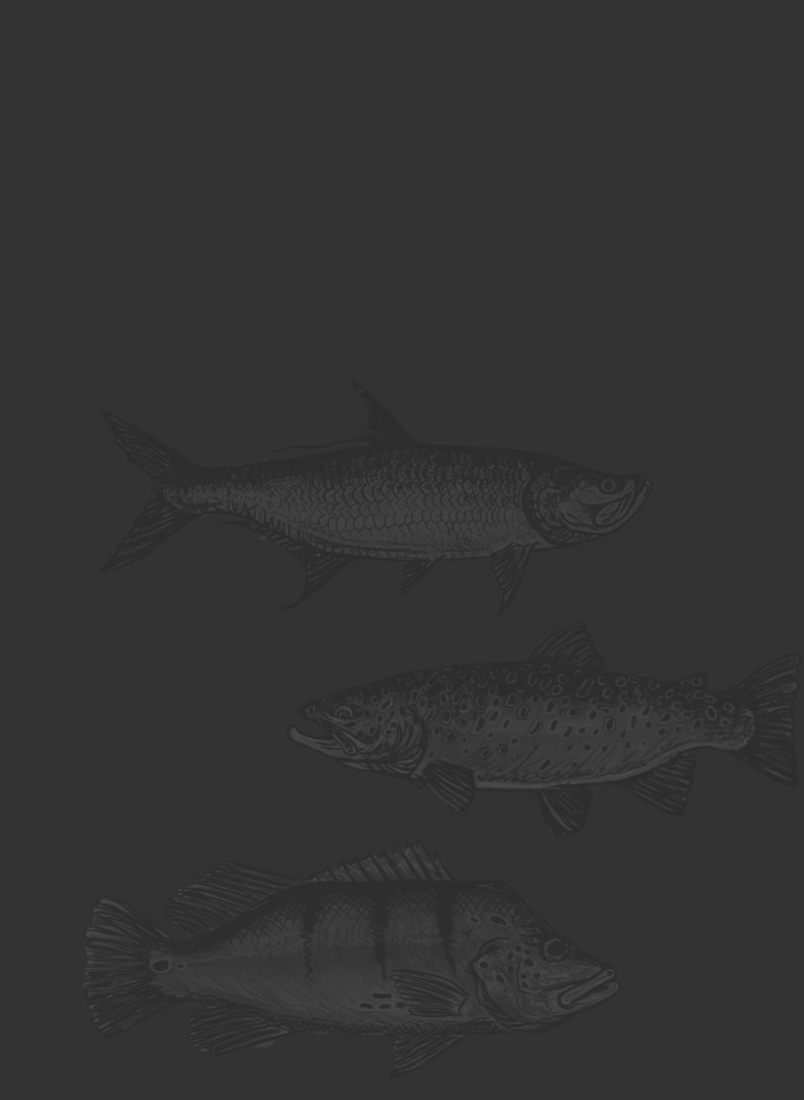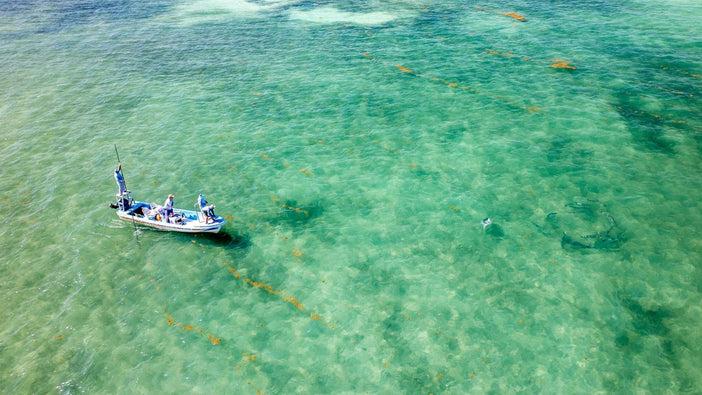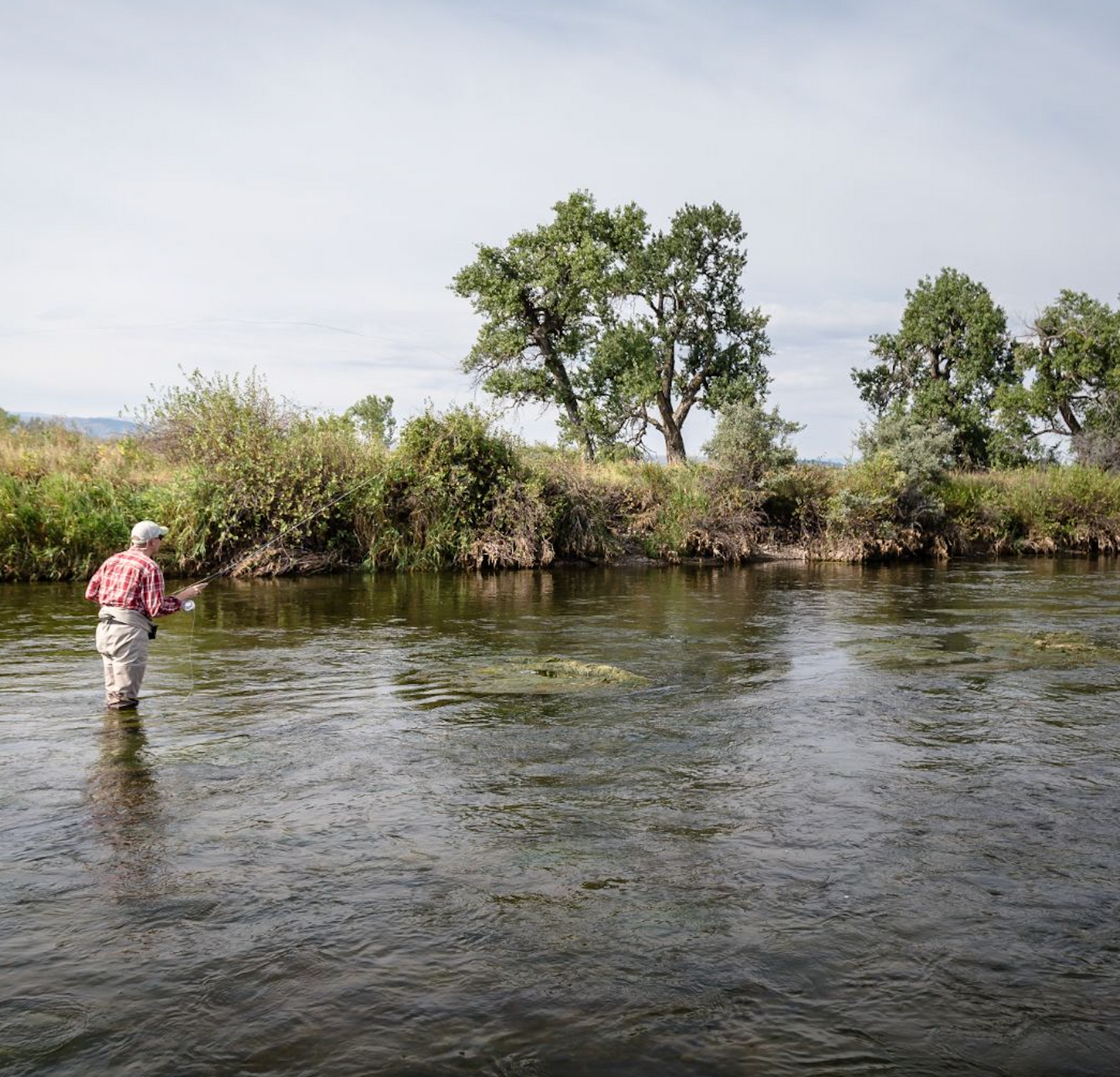Splendid days afloat, a wild trout taking your well-presented fly, and affirmation from your guide of a job well-done. These are components of a Montana fly fishing trip when planned correctly. Montana, and its cadre of world-famous rivers and creeks, boasts a lifetime’s worth of waters.
Spring: March through mid-June
Spring in Montana is when local anglers slide out of winter hibernation. Most rivers in Montana will fish well at some point during spring, and because it is not summer tourist season, angling pressure is less. The days become noticeably longer here in Southwest Montana with the beginning of daylight savings time around Easter. Early spring warm spells get the locals off the ski hills and onto the rivers in search of rising trout on just about every river in the area. For many anglers, this is their favorite time of the year, as rising fish aren't too wary and can be easy to find on cloudy days. Midges and Blue Winged Olives are the primary hatches during early spring, but the Mother's Day Caddis hatch is what everyone is hoping to hit just before the runoff starts in early May.
March is not a silver bullet because spring snowstorms regularly move through the state, but by April our weather patterns are more consistent, and fishing in Montana is on our minds. The weather in late April is typically beautiful with daytime temperatures in the 70's and nights near freezing. The last two weeks of April and the first week of May is one of the real “sleeper” times of year around Southwest Montana as the crowds of summer are still months away, the fish feed actively throughout the day, and the scenery is spectacular.
For a trip in April, anglers should focus on the Bighorn or Missouri Rivers. Their tailwater nature means consistent flows and clarity, making them less susceptible to our unsettled spring weather patterns. Experienced anglers on these rivers will enjoy hatches of midges, Blue Winged Olives, a few early-season stoneflies, and possibly some early caddis. Yellow Dog has exclusive arrangements with several destination lodges, top-shelf amenities, and options to suit most budgets. As our staff in Bozeman, Montana, can attest, they travel in-state to these two rivers when it’s time to fish after a long winter.
Daytime temperatures are usually mild during May and June, and thundershowers are very common. The surrounding landscape is bright green thanks to the melting snow and spring showers. The river bottoms offer refuge to many wildlife species as they rear their young, and it's common to see everything from baby otters to nests filled with fledgling Ospreys. In addition to some great fishing, late spring is one of those times of the year when the crowds aren't too bad and the weather is usually very comfortable all day long.
From year to year, our destination lodges in the Bozeman, Ennis, and Twin Bridges areas can experience solid fishing during spring. If you desire to experience these areas of Montana in a new season, contact us, and we can discuss options and create a potential itinerary.
The Smith River’s first launches of the year occur in mid-May. A 60-mile floating and camping trip through a remote canyon, a Smith River float trip is a Yellow Dog favorite. Along with the Missouri and Bighorn Rivers, the Smith can be a good option when other rivers are in the height of runoff.

Summer: Mid-June through Labor Day
The quality of fly fishing during this time of year is simply unmatched anywhere in the lower 48. On most days, we can get good numbers of wild trout on nymphs, dries, and streamers from dawn to dusk. Rising fish and prolific insect hatches attract anglers from around the world to the waters of Southwest Montana during the warm summer months.
Various hatches, including stoneflies, mayflies, midges, and caddis, bring the trout to the surface through the end of August. As the “dog days of summer” settle in, typically around mid-August, the hatches diminish, and the trout turn their attention to terrestrial insects such as ants, beetles, and hoppers. The days become noticeably shorter around Labor Day, and the cooling temperatures often bring the return of several strong Mayfly hatches on cloudy days.
The first big hatch of the summer is the Salmonflies which are enormous stoneflies found in most of the rivers of Southwest Montana. Fishing during this hatch can be fast and furious as the fish really search these bugs out on the water, resulting in some explosive takes. It can be difficult to get the fish on the dries every day during the hatch, but it's an amazing experience if you do get lucky enough to hit it just right. Nymphing along the banks is almost always productive, even when the fish aren't keyed into the adults.
During late June, most of the rivers see a fantastic amount of diversity in the types of insects on our local rivers. There are some days when you can look across a river and see several species of stoneflies, mayflies, and caddis flying around at once! Needless to say, it's an experience and one of many that make fly fishing the most productive method on the rivers and streams of Southwest Montana.
Insect activity begins to slow down win mid-July as we see less and less of the giant Salmonflies and Golden Stones. Although daily hatches of caddis and mayflies continue on through the hottest part of the summer, their activities are limited to the early and late parts of the day. We keep an eye out for the end of the Yellow Sally hatch as a signal that the trout will soon be turning their attention to hoppers and other terrestrials.

Long drifts and big dries can bring the biggest fish of the year to the surface on even the hottest August afternoon. We typically fish large attractor dries in the mornings and then hopper/dropper rigs as the day warms. Our guides try to get on the water early in the day, when the fish are most active, during the warmest part of the summer. Afternoon thundershowers are a welcome occurrence during August as they bring instant relief from the sweltering Montana sun and reinvigorate both anglers and fish alike.
The fishing crowds of summer are the lightest during August as many anglers are busy with the last family vacations of the summer. Also, August has a reputation for being the toughest of the summer months, especially during low water years. However, the abundance of water in the region always seems to offer a variety of choices, both public and private, that consistently hold feeding fish, even during the hottest days of the year.
Typical weather patterns tend to bring cooler weather in early September, and the rivers cool down quickly after a few nights of near-freezing temperatures. We see a renewal of mayfly hatches following these cooler nights, quickly gaining the attention of trout everywhere. Early morning Tricos are followed by mid-morning Western Red Quills and Gray Drakes, and then there are still plenty of terrestrials to keep much fish looking up for an easy meal throughout the day.
More and more anglers are planning September trips as the fishing and weather are typically very good. Sudden weather changes are a real possibility in September, so anglers need to be prepared for anything from snow to scorching heat. If early snow shows up, the Cottonwood leaves begin to turn yellow and gold, making for a spectacular day…fish or not.

Fall: Labor Day into October
For many anglers, there is no experience more treasured than floating the Yellowstone or Madison River in solitude on a crisp autumn day. Bugling elk and the whistle of wings from migrating waterfowl fill the morning air. Dry fly fishing starts to slow down, but steady risers can still be found during the Blue-Winged Olive emergence on cloudy days. Shorter days and cooler nights mean that the brown trout will soon get into the pre-spawn mode and aggressively chase streamers and big nymphs.
Late September is a time of transition for fishing across Southwest Montana as the hectic pace of summer is replaced with a much more leisurely pace of covering the water. The steady rise of trout in shallows is now the exception rather than the rule. Nymphing and streamer fishing becomes the most effective way to cover the water, and we spend more time wading likely spots. Swinging streamers through deep runs on sinking lines can bring both quality numbers and the size of wild trout on some days.

The weather in late fall tends to be unpredictable but comfortable until sometime after Halloween. We turn our attention to the Paradise Valley spring creeks once the really cold weather starts to show up, as their water temperatures keep the fish feeding actively on the coldest of days. The creeks are easy to wade in and have warming huts along the banks for shelter from the wind and cold. Rising fish and reduced rates make the spring creeks an ideal choice throughout the late fall and winter.
A fall trip to southwest Montana is an excellent time of year to take in all the area offers. The rivers are typically void of other anglers and in ideal conditions for both wade and float fishing. We can usually find some rising fish, but the real draw is covering large amounts of water in search of a true trophy-sized Brown. It truly is a remarkable time of year to spend a day on the waters around Bozeman.
Winter - November Through Mid-March
Winter is one of the most beautiful times of year here in Southwest Montana. Contrary to popular belief, however, there is some fantastic fishing around Bozeman, even during the coldest winter months. Typical storm patterns cover the area in bitterly cold weather a few times a year, but there are typically more days above freezing than not. These mild winter days can offer fantastic fishing in complete solitude under the region's snow-capped peaks.
The topography of Southwest Montana results in varied weather patterns across a relatively small area, so even though it may be windy and snowy in Bozeman, the weather in Livingston can be 20 degrees warmer and calm. We typically fish the main rivers or the Paradise Valley spring creeks during the winter months and prefer to walk wade trips as many of the rivers become challenging to float in January and February. The variety of options around Bozeman makes it possible to fish just about every day of the year!
The weather can be pretty variable this time of year, so we work with our guests to try to pick the best days depending on the weather. In most cases, we recommend adding a few fishing days to a ski trip or waiting until a week before your planned trip to finalize a winter fishing trip. We can usually get a good idea of the conditions with a week's notice as we watch the weather very closely this time of year. Regardless of the weather, winter is spectacular around Bozeman, and the fishing can be outstanding.
Related Articles:
- How To Decide To Break Up Your Montana Fly Fishing Vacation
- Montana Fly Fishing Hatches Made Simple
- Montana Fly Fishing Trips on Freestone vs. Tailwater
- The Best Fall Fly Fishing Destinations and Trips
- 8 Luxury Fly Fishing Lodges in Montana
- Dry Fly Fishing: What, When, and Where
- The Top 12 Pale Morning Dun/PMD Flies






